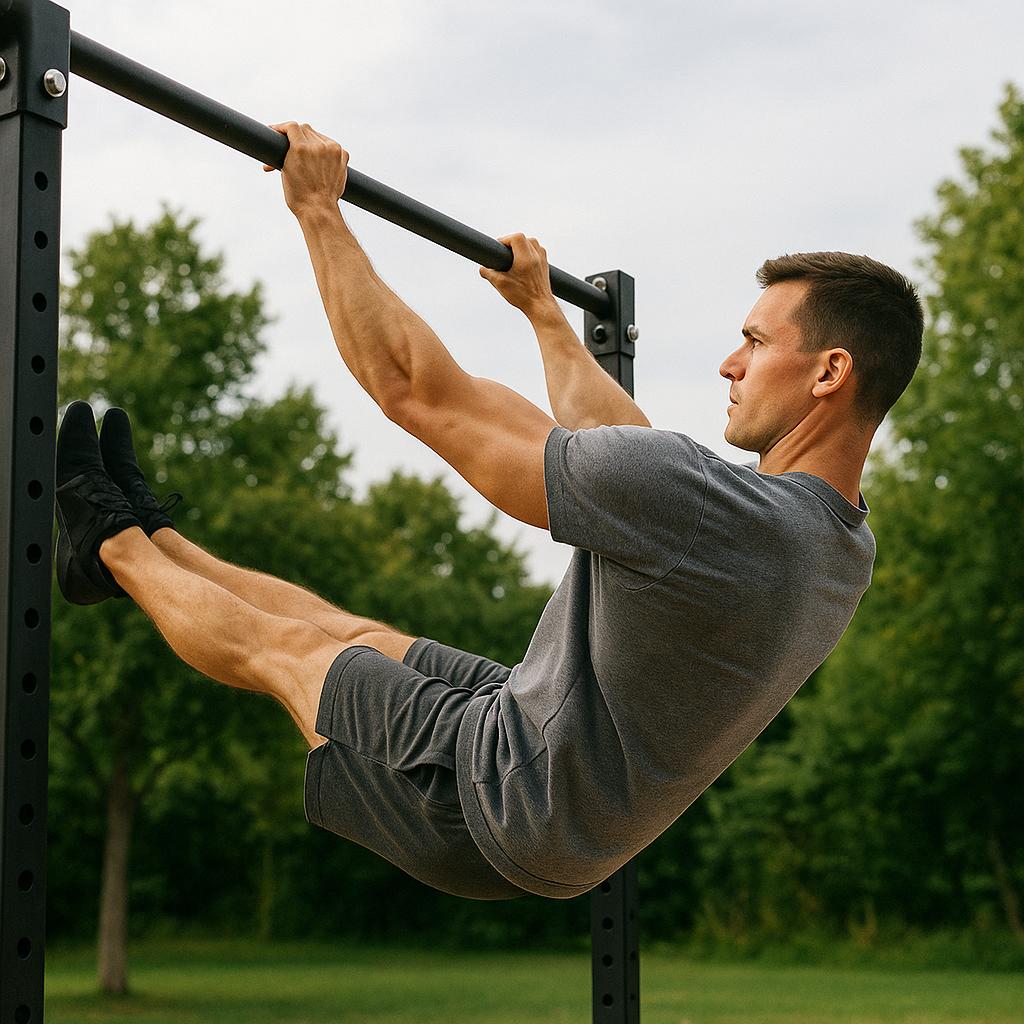The fastest way to learn the front lever is to master each progression step-by-step and build up your core, back, and shoulder strength. The front lever is one of the most impressive calisthenics skills, requiring not just raw strength, but also technique and patience.
Understanding how to front lever is crucial if you want to develop a powerful back, bulletproof core, and truly functional upper body strength. This guide explains each progression, the safest training routine, how long it takes, and common mistakes to avoid. Whether you’re a beginner or stuck on advanced tuck, here’s everything you need—plus links to official resources and expert tips.

The front lever is a static hold where you hang from a bar with your body completely horizontal, facing upward, and arms fully straight. It’s a gymnastics and calisthenics milestone move that demonstrates extreme body control and back/core strength.
- Requires: strong lats, scapular control, and hollow body position
- Used by: gymnasts, climbers, and advanced calisthenics athletes
Learn more on Wikipedia about the front lever
Front Lever Progressions
1. Dead Hang & Hollow Body Hold (Beginner)
Start with basic bar hangs to build grip and shoulder stability. Add hollow body holds on the floor to train the core engagement needed for the front lever.
- Hang from the bar, keep shoulders active
- Lie on your back, arms overhead, flatten lower back into floor
2. Tuck Front Lever
Tuck your knees to your chest and pull your body up until your back is parallel to the floor. This reduces leverage, making the hold easier for beginners.
Training goals:
10–15 second holds for 4–5 sets
3. Advanced Tuck
Open your hips so your thighs are 90° to your torso, back remains flat. This increases the challenge while still reducing leverage compared to full front lever.
Progression: Move from regular tuck to advanced tuck as your holds reach 15+ seconds.
4. Single Leg and Straddle Progressions
For single-leg, extend one leg while keeping the other tucked. For straddle, open both legs wide to shorten lever arm.
Why? These progressions bridge the gap between tuck/advanced tuck and the full front lever.
5. Full Front Lever
Both legs together, body perfectly straight and parallel to the ground. Arms fully locked, toes pointed.
Training goal: Hold for 5–10 seconds, 3–5 sets.
Tip: If you can’t yet, continue with straddle and negatives.
See step-by-step visuals on Calisthenics Nerd
Best Routine for Front Lever Progression
Sample Front Lever Workout Routine
Warm-Up:
- 2 sets x 20s dead hang
- 2 sets x 20s hollow body hold
Skill Work:
- 4 sets x 5–10s front lever progression holds (current level)
- 3 sets x 5 reps negatives (slowly lowering from inverted hang to parallel)
Accessory Strength:
- 3 sets x 8–10 front lever rows or inverted rows
- 3 sets x 6–8 weighted pull-ups or band pull-aparts
Frequency: 2–3 times per week with at least one rest day between sessions.
Rest: 2–3 minutes between sets for full recovery.
Always leave 1–2 seconds “in reserve”—don’t max out every set to avoid overtraining.
Source: Heavyweight Cali Front Lever Progression (2024)
Technique Tips: Avoid These Mistakes
- Don’t let your hips sag! Engage your glutes and core to keep a flat body.
- Scapula retraction/depression: Pull your shoulders down and back; don’t shrug up.
- Lock out your elbows: Bent arms mean you’re cheating the lever.
- Point your toes: This keeps the chain tight and helps alignment.
- Breathe and stay controlled: Don’t jerk into the position.
Official FAQ & injury prevention: Bar Brothers Support
Frequently Asked Questions (FAQ)
How long does it take to learn the front lever?
- Beginners: 8–18+ months to achieve the full hold
- If you can do 10–15 pull-ups and 60s hollow holds: expect 6–12 months
- Progress is non-linear! Genetics, frequency, and consistency matter.
Do I need equipment?
Just a sturdy pull-up bar or rings. Gymnastics rings add instability (harder).
Should I train to failure?
No. Always stop 1–2 seconds short to prevent injury and allow for good form.
How can I speed up progress?
- Add accessory work: dragon flags, skin-the-cat, front lever rows.
- Focus on quality over quantity.
More tips and progressions on Steel Supplements Blog
Conclusion
Anyone can learn how to front lever with patience, the right progressions, and a structured routine. Stay consistent, prioritize technique, and don’t rush—your back, abs, and overall strength will improve dramatically.
